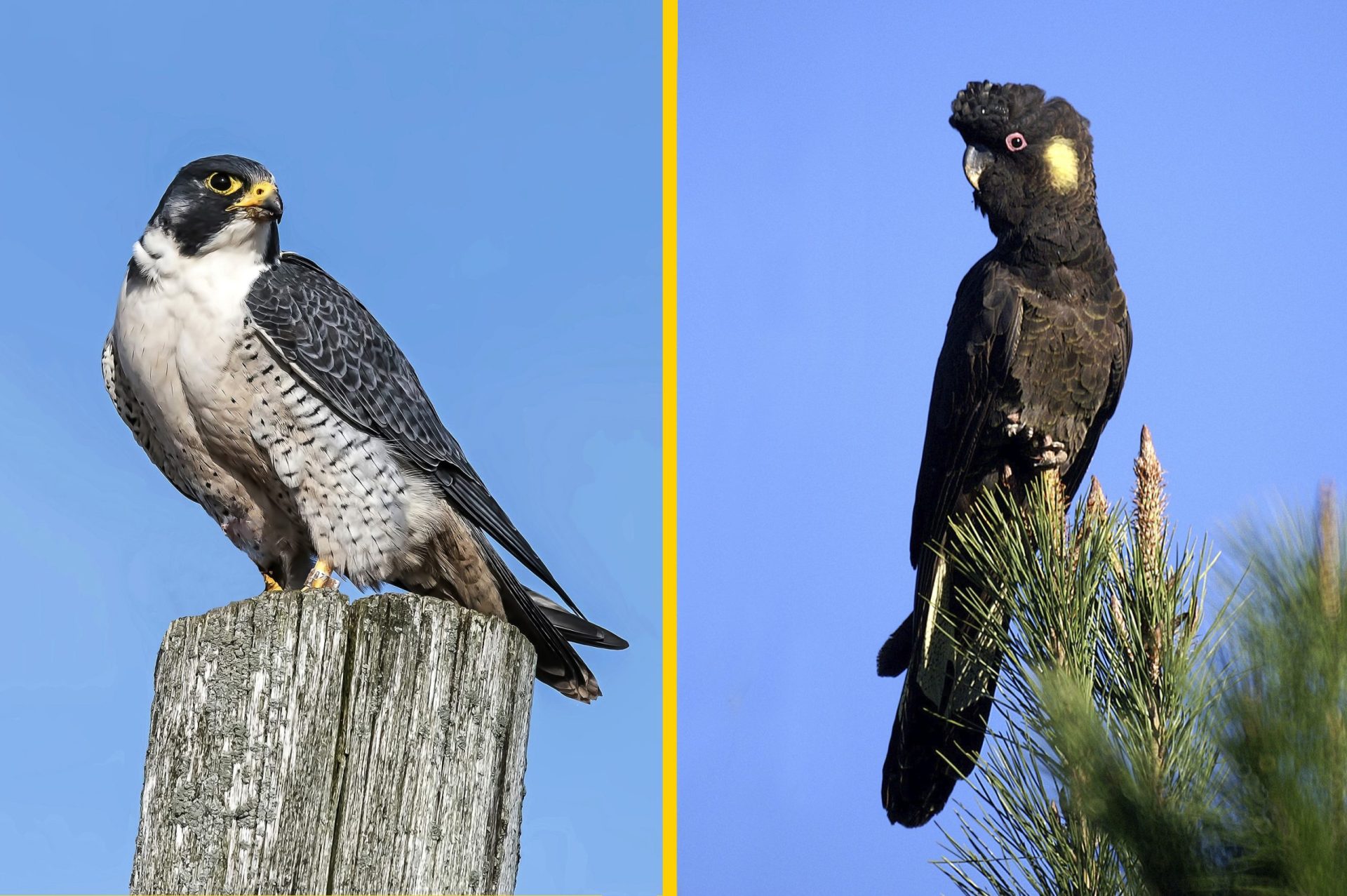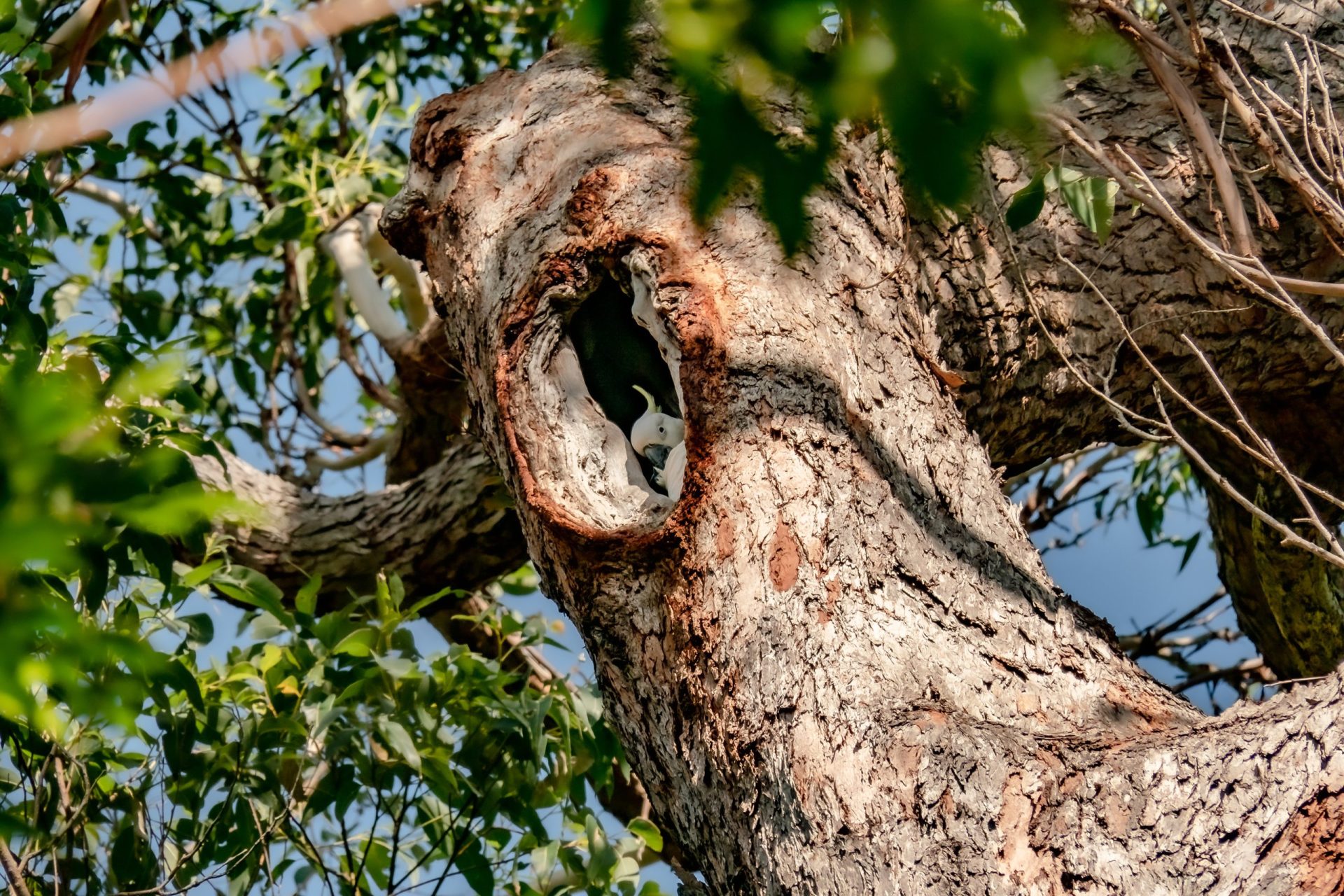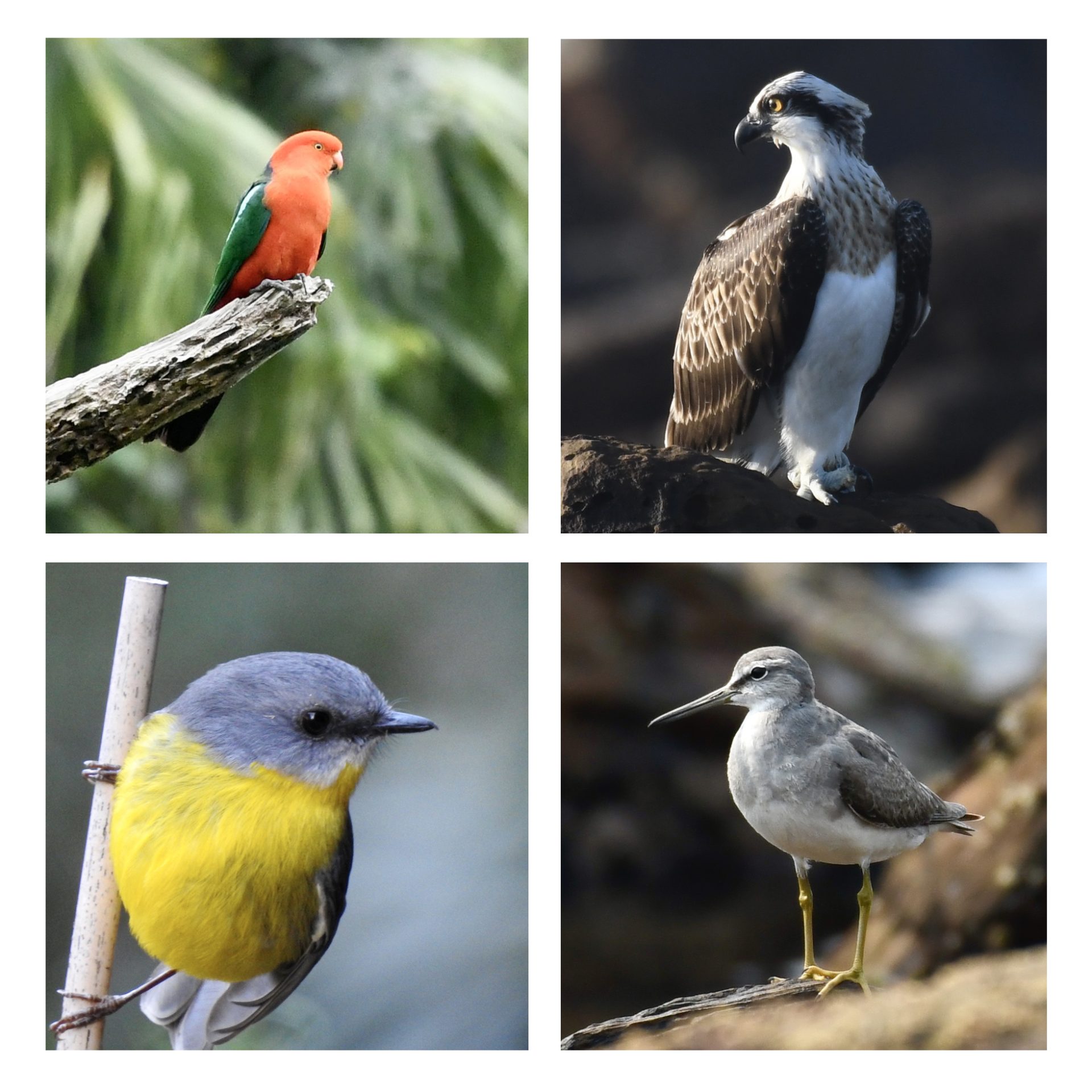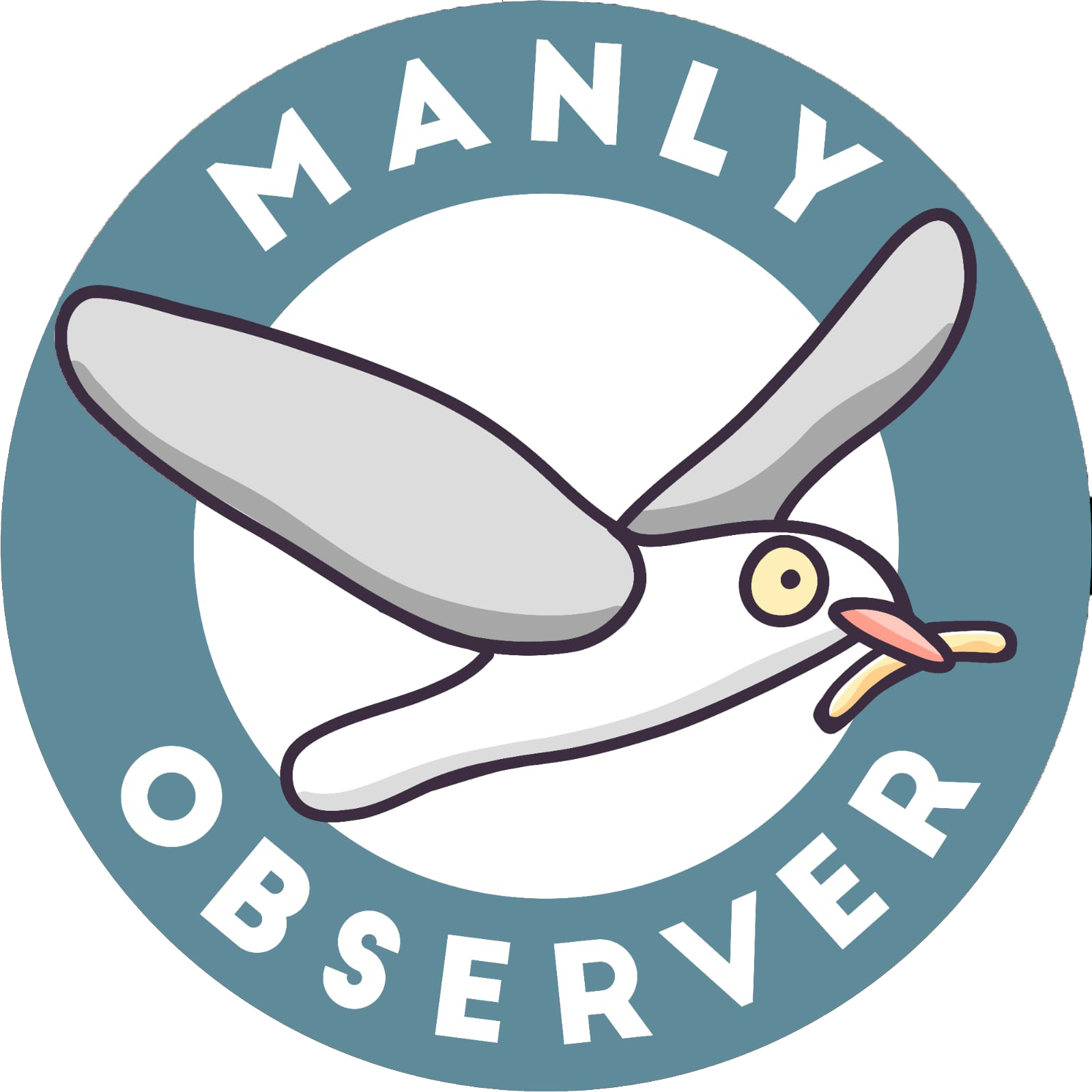Mike Barrow knows birds. In fact not only can he identify just about any bird call he hears along the Northern Beaches, he can distinguish between flocks socialising, individuals calling, territorial rivalry, warnings of predators and the lonely attracting a mate.
Manly Observer joined Mike, who owns Aussie Bird Tours, on a birdwatching trek around of Dee Why Lagoon, Irrawong Reserve and Long Reef Headland.
How many different bird calls can you identify?
“Tough question,” he considered. “Locally on the Northern Beaches and Sydney, I reckon about 95%. Take me out of the area and it becomes way harder. It’s like anything, practice, practice, practice.”
What are your favourite bird species and why?
“I love Peregrine Falcons. They are the fastest animal on the planet and have been recorded at speeds over 280km/hr. You know when one is around because all the other birds give out their alarm calls and scatter.
I also love Yellow-tailed Black Cockatoos. Their flight is so graceful.”

Birdwatching is an unusual occupation, and one that requires patience and perseverance, with mixed results. In Britain the more dedicated among the observers, who primarily seek out rare species, are known as ‘twitchers’.
I once hitched a ride with a twitcher who drove the length of England to catch sight of a migratory bird that landed on a south coast beach, having been blown off course in a storm. The bird flew off after a few hours rest, but not before a dozen twitchers from all over Britain converged on the beach to witness its unscheduled stopover.
What attracted Mike to birdwatching?
“I started as a young birder in the UK,” he revealed. “My dad was a fly fisherman and that didn’t interest me at all. When I was 11, I went on holiday to Scotland with a friend from school and his mum. She took us to a place called Bass Rock where there were thousands of seabirds nesting on this vast rock protruding out of the sea. It totally enamoured me.”
Mike has recordings of native birds on his phone, and whilst we were in the Irrawong Reserve approaching the waterfall, he played the calling sound of a golden whistler.
“It’s a territorial call,” Mike revealed. “However, you don’t play it during the nesting season, it’s not good for the birds,” Mike cautioned, because it heightens their anxiety.
Soon, a male whistler that was perched on a tree branch nearby, a tiny songbird with black head, white chin and a bright yellow chest, flew in close to inspect this suspected interloper. Its curiosity delighted the two young girls on our birdwatching tour.

Can birdwatchers download apps to their mobile phone that analyse and identify native species?
“There are a few apps available with bird calls,” Mike confirmed. “The calls on the app help narrow the type of bird I am trying to identify. Currently there are no apps for Australian birds which identify the species. There are for the USA and other regions of the world. I’m sure someone will make one soon.”
However, Mike recommended training your ears and not relying on digital technology to determine bird species.
“For me, that would take the fun away from working out the bird I am trying to identify,” he explained. “By taking habitat, shape, call and location into consideration, it gets easier.”
What are some of the different habitats on the Northern Beaches, and what bird species might be encountered in them?
“Dee Why Lagoon can be full of seawater or completely empty and contain ducks, cormorants and has bush birds around the edges. On a good day I have seen 50 different species there in a few hours.
“Long Reef is an aquatic reserve and an important rock platform for wading birds and migrant species from Siberia in Spring.
“Irrawong Reserve lies below the Ingleside escarpment and is a rainforest which hosts a variety of rainforest species like gerygones, fantails, whistlers and the occasional roosting powerful owl.
“Warriewood Wetlands has a remnant swamp mahogany and sand plain wetland and 191 bird species have been recorded there.”

On the tour this reporter joined we observed many diverse bird species, some specially adapted to particular environments.
For example, at Dee Why Lagoon, we sighted a wagtail, magpie lark, fairy wren and welcome swallow near the dunes (small and swift insect ambushers); ibis, dusky moorhens, herons, grebes, great egrets and pied cormorants in the shallows (water-insulated, some with feet splayed for paddling, others with long legs for wading, and many of them pointy-beaked fish hunters); and cockatoos, corellas, king parrots, grey butcher birds, silver eyes and crested pigeons in the forest (many brightly-coloured with curved beaks for cracking nuts and devouring fruit, or bark-coloured camouflaged with pointed beaks for skewering lizards and snakes). The latter all scattered when a brown goshawk swooped through the treetops, seeking prey.
We also learned to differentiate between the calls of musk lorikeets and rainbow lorikeets (the former have a slightly higher squeak).
In Irrawong Reserve, North Narrabeen, we encountered a scarlet honey eater, cockatoos nesting in a tree hollow, brown cuckoo doves, and a spotted pardalote. Mike explained that pardalote, among the smallest of Australian birds, feed on lerps – the hard lumps that appear on Eucalyptus leaves. These are protective covers made by jumping plant lice in which they excrete honeydew that crystalises – providing sweet nectar to a small foraging bird.
At Long Reef Headland we watched marsh lapwings, oystercatchers, silver gulls, crested terns, red-necked stints and 2 eastern osprey, then, over the golf course above, we observed (if I may use a cheesy 80s music-related pun!) kestrel manoeuvres in the park.
“Considering there are about 900 Australian bird species, just over 300 have been identified on the northern beaches,” Mike enthused. “We expect to identify about 50 on the half day tour and 70-80 on the full day multi-habitat tour.”

What are your thoughts on retaining habitats and helping birdlife on the Northern Beaches?
“Habitat retention is vital to maintaining healthy space for birds, mammals, insects and all our fauna and flora,” Mike insisted. “Urban sprawl has a negative effect and pet owners need to understand that wildlife areas are not dog walking opportunities.
“Council play a key role and I believe need to be more active in maintaining habitats for wildlife. A few signs are great but active patrolling by rangers and educating locals and visitors to the area seem to have been overlooked.
“Warriewood Wetlands is struggling with invasive weeds and also the active bell miner birds which are killing the eucalyptus trees and driving other small bird species away. These birds need to be removed.”
Anything you’d like to add?
“I ran two bird tours in Kakadu and Darwin in July and August,” he revealed. “If your readers are interested in seeing some amazing Top End birds, experiencing 60,000-year-old Aboriginal culture and 25,000-year-old rock art, check out my weblink.”
Website: https://aussiebirdtours.com.au/
Contact: Mike Barrow c/o info@aussiebirdtours.com.au
Facebook: https://www.facebook.com/AussieBirdTours
This article is not sponsored.




